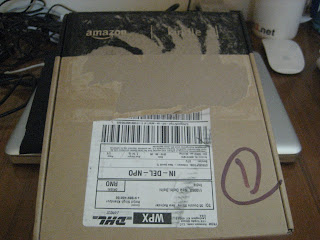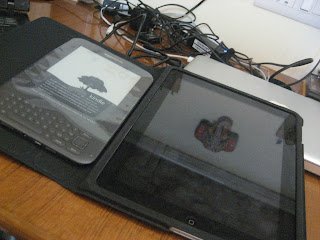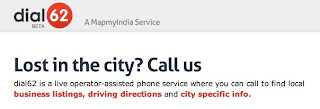UNBOXING AND FIRST REVIEW OF CEDAR FROM SONY ERICSSON
In My Meeting with The Sony Ericsson Team, I had requested for them to send over their Green Portfolio Phones, and in the 4 Phones they sent me, they also included the Cedar which has just been launched earlier this week. At A Price point of Rs. 6200 the Cedar is an attractive phone, with 3G Data Capabilities, a Good Quality Speaker and Screen.
The Cedar's Camera is a 2MB, with capabilities to shoot a 30fps Video in VGA Mode. The Included Web Browser is a Access Netfront™ 3.5and Sony has Built in Apps for You Tube Streaming, Some Games, An FM Radio, also something called a Widget Manager 2.0 – an application which allows users access social networking via the stand-by screen. Widget Manager can login to Facebook, Twitter and MySpace accounts. There is also a Web Based Backup of the phone book (Thumbs Up) and an EAS Push mail capability. The Screen is a 2.2" 262K colors TFT. The Phone weighs a cool 84 Grams, and feels light and nice in your hand. The claimed talk time is 12Hours 30 minutes, with a Standby time of upto 420 minutes.
I loved the keyboard, especially the ridged edges, though the missing bumps on the 5 Key, and the key layout is something that you have to get used to, the keys work well lighted in a dark room (See video at the end of the post).
The CEDAR in it's Box. If you notice the box is pretty Small. In my conversation with Anurag Kontu last week, he mentioned that Indian Consumers are not too happy with a Small box Packing, they feel that they should get a bigger box, but the smaller box is a part of the Green Heart process at Sony, to reduce packaging material. Let's go ahead and open this box up now.
The box has minimal stuff in it, and notice there is no plastic bags, a big part of going green, to reduce any waste material. Sony has also included a micro USB charger that switches to zero power usage when the phone is not plugged in, or the phone is fully charged. Also included is a small pouch that has your phone, with a Green Heart Logo, you can use this to carry the phone around, as the material quality is pretty decent. There are two small booklets with the SAR and Important Information in it. The Phone user guide is on the phone itself and is not included as a Printed Copy.
Let's Go ahead and now look at the phone.
That's the phone. The phone box contained a Black and Red combo, also available is a silver and Black Combo but I loved the red on this phone. More Pictures to follow.
Let's Power on this Baby
The 3.5 mm jack is on the top of the phone and the Micro USB is on the bottom of the phone.
Here are the Demo Videos, both in a Bright room and a dark room
I am going to now use this phone over the next 2 weeks and will report about the performance. In the first preview I love the screen and sound Quality, keeping in mind that this phone is just Rs. 6200 and has 3G HSDPA capabilities. Though the camera is only 2Megapixel (but a Quick time support means I will be able to shoot some videos and port them to my Apple Mac Easily)... Let's see how the usage comes along on this one.
I also got the Hazel, Aspen, and Elm from Sony to test out, which are all a part of their Green Portfolio. I will post pictures of these soon. The Aspen is a windows Mobile phone, while the Hazel and Elm use the same OS Cedar Uses (Sony's Proprietary OS)




































